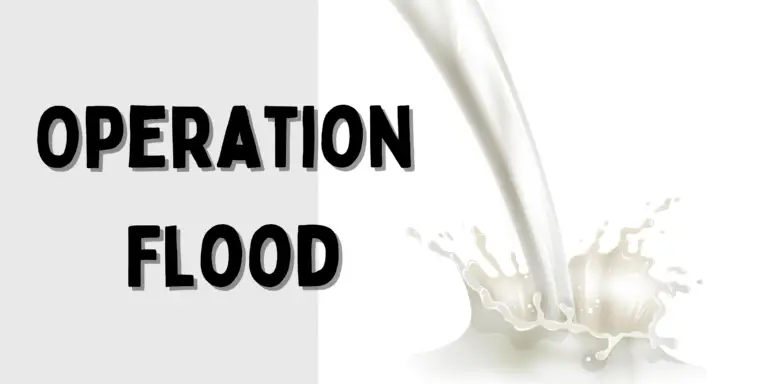Title: “Operation Flood: Unleashing the White Revolution in India”
Operation Flood, also known as the White Revolution of India, stands as a transformative movement in the annals of Indian agriculture. Launched on January 13, 1970, this program heralded a new era in dairy development, turning India from a milk-deficient nation into the world’s largest milk producer. This remarkable feat was achieved through a meticulously structured three-phase program, spearheaded by the National Dairy Development Board (NDDB) and the visionary Dr. Verghese Kurien, often hailed as the architect of Operation Flood.
The inception of Operation Flood was aimed at creating a national milk grid that would link milk producers across India to consumers in over 700 towns and cities. This initiative not only mitigated seasonal and regional price disparities but also ensured that the lion’s share of the profits went directly to the producers, thereby eliminating exploitative middlemen.
The first phase of Operation Flood (1970–1980) was financed by the sale of skimmed milk powder and butter oil donated by the European Economic Community (EEC) through the World Food Programme (WFP). The NDDB meticulously planned the program and negotiated the details of EEC assistance. During this phase, 18 of India’s premier milk sheds were linked with consumers in India’s major metropolitan cities: Delhi, Mumbai, Kolkata, and Chennai, establishing mother dairies in these metros.
The success of Operation Flood can be attributed to several factors, including the Anand Pattern Experiment at Amul, which involved the production of skim milk powder from buffalo milk. This innovation allowed Amul to compete successfully with cow-milk-based suppliers such as Nestle.
The objectives of Operation Flood were multifaceted: increasing milk production, augmenting rural incomes, ensuring fair prices for consumers, and providing a steady supply of milk. The program’s impact was profound, doubling the milk available per person in India within 30 years and making dairy farming the largest self-sustainable rural employment generator in the country.
The village milk producers’ cooperatives were the bedrock of Operation Flood. These cooperatives procured milk and provided inputs and services, making modern management and technology accessible to all members. The program’s success is a testament to the power of cooperative structures to transform the livelihoods of millions of farmers.
Today, Operation Flood stands as a shining example of a successful rural development program. It has not only made India self-sufficient in milk production but has also empowered farmers by giving them control over the resources they create. The legacy of Operation Flood continues to inspire similar initiatives across the globe, showcasing the potential of cooperative movements to achieve sustainable development.
In conclusion, Operation Flood was not just a dairy development program; it was a socio-economic revolution that uplifted the lives of millions of Indian farmers. It demonstrated the power of collective action and the importance of visionary leadership in driving large-scale change. As we reflect on the success of Operation Flood, it serves as a reminder of the enduring impact of innovative and inclusive development strategies.
References:
Wikipedia
BYJU’S
ClearIAS
